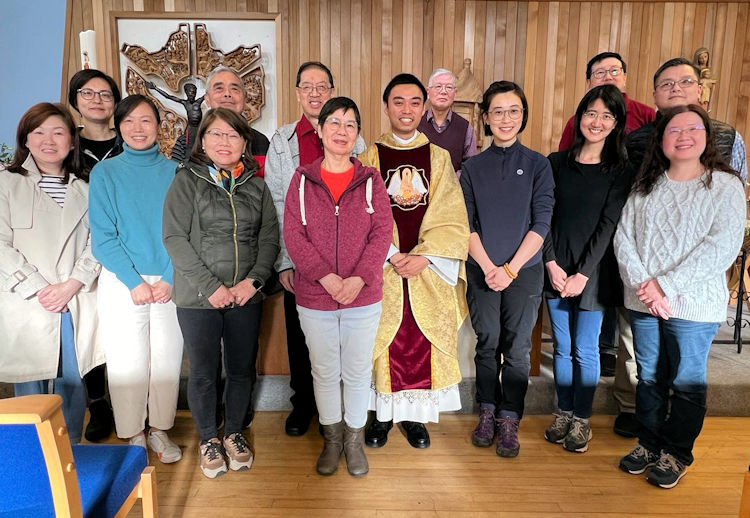Couple add digital dimension to diocesan archives

East Anglia priest writes new Pilgrim’s Guide to Rome
November 6, 2019
An East Anglian recipe for confident Catholics
November 11, 2019In the former sacristy, down a spiral staircase, deep under St John’s Cathedral in Norwich, are hundreds of boxes comprising the Diocese of East Anglia Archives. There the archivists, Michael and Gillian Hill, are working hard to maintain the archive and to develop an accessible on-line archive catalogue.
“Bishop Alan appointed my wife Gillian and I to be the archivists in March last year. We are the latest in a long line of people to be passed the Archive baton.” says Michael.
They work as a team: Gillian enjoys history and researching the backgrounds of archival items and helping people to find documents and information; Michael’s focus is the new IT system for the public catalogues. The couple are happy to assist parishes develop their own archives – and Michael has written a guide to help them do so.
“Our role is to retain and organise the documents and artefacts which form part of the history of the diocese. Indeed, we are required to do so by a Vatican directive to all clergy to maintain proper records. The Archive tells the story of the journey from the past to the present and helps inform the future,” said Michael.
“We maintain the Archive for the diocese as a whole and exist to support its 51 parishes with their own records/archives. Any material, document or artefact, presented to us will be assessed for its relevance to the diocesan story before being retained in the Archive.
“Here, we have some 300 boxes containing around 20,000 separate documents; we have clerical vestments used by bishops, canons and priests; somewhere in the region of 1500 photographs. We have deeds, wills and the Papal Bulls which set up the Diocese of East Anglia and which introduced each Bishop. Also some artefacts including a sculptured head, portable altars, relics, and recusant chalices,” said Michael.
“Currently the written word is the bedrock of the archive,” said Gillian, “but today’s communication systems, such as email, text and messaging apps, present a significant challenge to all archivists trying to preserve the record for future researchers.”
“We must assess the items we receive critically to be satisfied they provide a relevant picture of the past and are worth retaining for the future,” she said. “We can only do this effectively if each item has some provenance i.e. it is described and accompanied by, at least, an outline history. Once in the Archive, ownership transfers to the diocese.”
“Buried in the archives are lots of little stories about people, about places and about items,” Michael said. “It is our job to help researchers find those stories.” The couple try to find answers to people’s questions and have a lot of requests relating to family history, original documentation and helping parish priests build a history of their parish.
“Since last year we discovered a priest missing from a parish’s history; we helped parishes to start creating their own histories; we even discovered two new relatives for a family researching their predecessors.
Following an appeal from an Italian researcher to help solve a 19th-century paintings mystery connected with the Cathedral’s benefactor, the Duke of Norfolk, Michael, who used to work with the Department for Culture, Media and Sport helping libraries develop digital resources, appeared on BBC Radio Norfolk to talk about the appeal and the work of the Archive.
Gillian and Michael are in the early stages of producing the on-line catalogue and the 5 parishes completed represent over 1300 records on the widely-used AtoM (Access to Memory) system. AtoM was originally developed for the Canadian Government to implement international archival standards. A visit is necessary to see the actual documents.
The archive is available online at: http://104.41.220.117/
Michael and Gillian are happy to hear from parishes with material to offer, and people with an historical query or to visit. You can contact then at archive@rcdea.org.uk
Listen to Michael talking about the Archive and the appeal to help solve a 19th-century paintings mystery connected on BBC Radio Norfolk at: https://bbc.co.uk/sounds/play/ and start listening at 1.45hrs.




